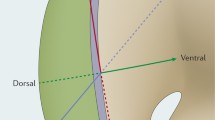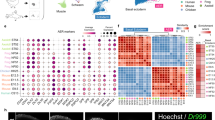Abstract
In this review, we focus on the additional limb induced by members of the fibroblast growth factor (FGF) family in the flank of chick embryos. The ”additional limb” was first reported 73 years ago by Balinsky in 1925. He grafted otic vesicle to the flank of newt embryos and observed the formation of the ”additional limb.” In 1995, formation of an additional limb was found to be induced by FGF in the chick embryo. This finding subsequently led to the recent understanding of how the limb bud is initially formed, how the limb position is determined, and how the limb identity is determined. Thus, the additional limb has been recognized as a useful experimental system for the study of limb development and its relation to the regionalization of the body. Furthermore, since limb muscles are formed from cells which have migrated from somites and innervation to them takes place from the spinal cord, the additional limb would also be a powerful tool with which to study the relation of limb morphogenesis to developmental processes of the spinal cord and somites. This review consists of five sections: (1) ”Introduction,” (2) ”How to make additional limbs,” (3) ”Characteristics of the additional limb,” (4) ”Studies with the additional limb,” and (5) ”Concluding remarks.” In the second section, techniques to make additional limbs are reviewed, showing that additional limbs can be made by fairly easy manipulation of the chick embryo. In the third section, the characteristics analyzed so far of the additional limb are summarized, focusing on its morphology. In the fourth section, recent studies on the use of the additional limb are reviewed: experiments on the additional limb have been performed to elucidate the mechanisms governing determination of limb identity by Hox codes and the Tbx family and initiation of limb formation by FGF10. In addition, the roles of SF/HGF in the formation of limb muscles have also been investigated using the additional limb. In the near future, the additional limb will be also used in the study of innervation from the spinal cord, and probably migration of neural crest cells.
Similar content being viewed by others
Author information
Authors and Affiliations
Additional information
Received: 7 September 1998 / Accepted: 1 December 1998
Rights and permissions
About this article
Cite this article
Ohuchi, H., Noji, S. Fibroblast-growth-factor-induced additional limbs in the study of initiation of limb formation, limb identity, myogenesis, and innervation. Cell Tissue Res 296, 45–56 (1999). https://doi.org/10.1007/s004410051265
Issue Date:
DOI: https://doi.org/10.1007/s004410051265




